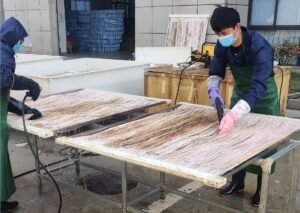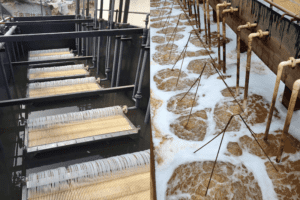Last Updated on April 5, 2023 by Kevin Chen
Commissioning the MBR membrane system is an important process to get the system operational with treated water output per the design parameters. The MBR membrane system is a state-of-the-art technology that combines physical and biological processes for wastewater treatment. It is a highly efficient system that can remove various pollutants from wastewater. In this article, we will explain the steps you need to take to ensure successful commissioning.
How To Commission The MBR Membrane With Wastewater?
Step 1: Sludge adding and acclimation.
Step 2: Commissioning at 1/3 of the design flux.
Step 3: According to the sludge concentration and effluent quality, gradually increase the effluent volume.
Step 4: Record the flow rate at full load, TMP, and sludge concentration.

Precautions:
- Inoculated activated sludge must be added. The membrane pores will be blocked if the raw water is directly separated and filtered.
- A stable source of sewage should be ensured when inoculating sludge. If there is no sewage inflow for a long time, it will cause sludge decay and block the membrane pores.
- When the inoculated sludge concentration exceeds 3000mg/L, filtration can be carried out. If the concentration is lower than this, it is easy to cause blockage of membrane pores.
- The newly added sludge should not be filtered immediately but should be aerated and acclimated until there is no bad odor before filtering.
Warning:
- The membrane system must be operated initially at 1/3 of the design flux and increased to the design flux daily. Excessive water production may cause irreversible degradation of membrane flux.
- There may be foam production during the initial sludge dosing. It is recommended to use spraying to eliminate foam, and if defoamer is used, it is recommended to use alcohol defoamer, and it is forbidden to use silicon-containing defoamer.
The above is information about commissioning MBR membrane system with sewage. If you still have related questions about the membrane bioreactor, please feel free to contact SPERTA.
Shanghai SPERTA Environmental Technology Co., Ltd. has specialized in producing water treatment products for many years. The company has its own MBR membrane technology, a complete technical team, and pre-sales and after-sales service. If you have any needs, please feel free to contact us.








